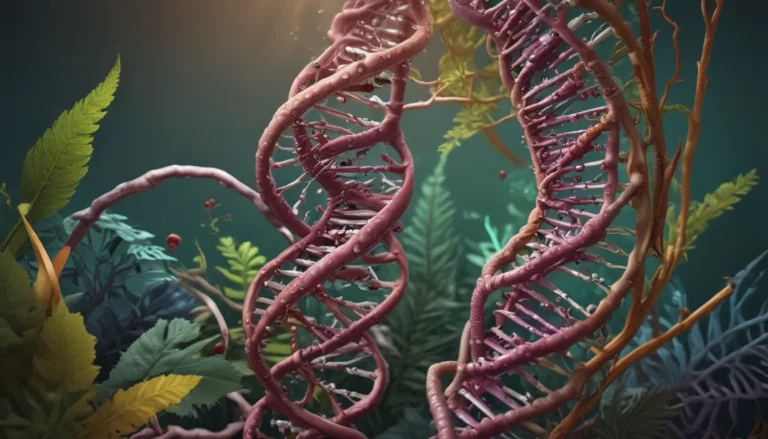A Note About Images: The images used in our articles are for illustration purposes only and may not exactly match the content. They are meant to engage readers, but the text should be relied upon for accurate information.
In the vast realm of microbiology, metagenomics stands out as a captivating field of study that has transformed our understanding of microbial life on Earth. By delving into the genetic material of entire communities of microorganisms, metagenomics enables us to explore the intricate world of microbial diversity and functionality. From unraveling hidden secrets of the microbial universe to revolutionizing scientific disciplines such as environmental studies, human health, agriculture, and biotechnology, the potential and significance of metagenomics are truly awe-inspiring.
The Wonders of Metagenomics
Metagenomics reveals the hidden depths of microbial diversity by allowing us to explore complex ecosystems where traditional methods fall short. Instead of isolating and culturing individual species, metagenomics analyzes DNA directly extracted from environmental samples, unveiling countless previously unknown microorganisms. This approach has revolutionized our understanding of microbial diversity, opening up new frontiers for scientific exploration.
Exploring Functional Capabilities
Through metagenomics, scientists can decipher the functional capabilities of microbial communities by studying their genetic content. This analysis can identify genes responsible for various biochemical processes such as enzyme production, synthesis of secondary metabolites, and pollutant degradation. The knowledge gained has vast applications in biotechnology, environmental remediation, and beyond.
Shedding Light on Human Health
Metagenomic studies have uncovered the complex relationship between our microbiome and human health. By analyzing the genomes of microbes residing in our bodies, researchers have gained valuable insights into various diseases such as obesity, autoimmune disorders, and mental health conditions. This understanding paves the way for innovative therapeutic approaches and personalized medicine.
Marvels of Metagenomics in Different Arenas
Environmental Exploration
Metagenomics allows scientists to venture into extreme and inhospitable environments such as deep-sea hydrothermal vents, ice caps, and deserts. These environments harbor unique and resilient microbial communities that have adapted to survive under harsh conditions. By studying their genomes, researchers can gain insights into the survival strategies of extremophiles and discover genes with potential biotechnological applications.
Environmental Monitoring
Metagenomics plays a crucial role in environmental monitoring, helping us understand the impact of human activities on ecosystems. By analyzing microbial communities in soil, water, and air samples, researchers can assess changes in biodiversity, monitor pollutant spread, and evaluate conservation strategies’ effectiveness.
Antibiotic Discovery
The rise of antibiotic resistance poses a significant threat to public health. Metagenomics offers a promising solution by providing a rich source of potential new antibiotics. By analyzing diverse environmental samples, researchers can uncover antimicrobial compounds produced by microorganisms, leading to the development of novel drug candidates.
Agriculture Advancements
Metagenomics holds great promise for enhancing agricultural practices. By studying soil microbial communities, researchers can gain insights into nutrient cycling, plant-microbe interactions, and disease suppression. This knowledge can drive innovative strategies for sustainable agriculture, such as biofertilizers and biocontrol agents.
Unveiling Ancient Secrets
Metagenomics has allowed scientists to uncover ancient microorganisms’ genetic secrets preserved in various natural environments. By analyzing DNA samples from permafrost, amber, and cave sediments, researchers have reconstructed genomes of long-extinct species and gained insights into evolutionary processes shaping life on Earth.
Conclusion: A World of Metagenomic Marvels
In conclusion, metagenomics is a fascinating field that has revolutionized our understanding of the microbial world. Its innovative approaches and cutting-edge technologies have opened up new possibilities for scientific exploration and practical applications in various fields. From deciphering microbial diversity to revolutionizing healthcare and environmental preservation, metagenomics continues to unveil astonishing insights into the hidden universe of microorganisms.
FAQs
Q: What is metagenomics?
Metagenomics involves analyzing genetic material from environmental samples to study the genetic diversity and function of microbial communities.
Q: How does metagenomics help in discovering new species?
Metagenomics allows scientists to sequence DNA from microorganisms without culturing them, aiding in the discovery of new species.
Q: What are some applications of metagenomics?
Metagenomics is used in environmental studies, medicine, and agriculture to assess biodiversity, study interactions, and improve practices.
Q: How does metagenomics contribute to understanding human health?
Metagenomics helps study the human microbiome to understand its role in diseases and develop treatments.
Q: What are the challenges in metagenomics research?
Challenges include data analysis, reference genomes, contamination, and variability in DNA extraction techniques.
Embark on a journey through the marvels of metagenomics and uncover the wonders of the microbial world. Whether exploring hidden microbial diversity, delving into functional capabilities, or unraveling ancient secrets, metagenomics continues to amaze and inspire with its boundless potential for discovery and advancement.





